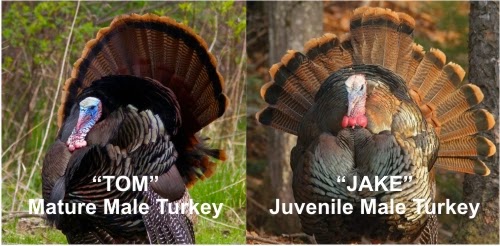Everyone wants to bring in that giant tom during the hunting season. We’re going to help you do just that! With proper scouting, the right calls, intelligent positioning, and a determined mindset we’ll help you bring in the best gobbler you’ve yet to bring in. It just takes a little bit of know-how and practice!

Scouting
A.) It’s important to scout your area no matter if you’re hunting turkeys or something else. Scouting will help you identify ridges that you can drop in to intercept a moving flock of turkeys and meadows and fields that you know turkeys will spend their time strutting and preening during the afternoon.
B.) Try scouting 1-2 days before the opening weekend to get a feel for where the gobblers are at. You can even set up game trail cameras a month before to get a better overall feel of where the turkeys are.
C.) When you’re scouting it’s a good idea to use a non-turkey call like a crow or an owl call. Turkeys tend to get skittish to overused turkey calls as the season goes on and you don’t want them to get used to your call and ultimately ignore it. Toms will gobble at just about anything on the opening weekend.
D.) Finding the roosting spot of turkeys is going to be ideal because you’ll know where they’re at for the morning when you start hunting. You can find them at night and listen for their flapping as they fly into the roost and you can do light, soft calls as you go through where you think they will be. Sometimes with a crow or owl call, you can get a tom to gobble from his roost and give his position away.
E.) When you’re actually on the hunt you’ll want to check the fields, the hardwood forests, and the pastures for turkeys, obviously, but some other telltale signs are tracks, droppings, and scratchings in the ground from their claws and beaks.
F.) Pre-scouting can start all the way from home if you use google topographical maps to scout out the terrain and find the places where you think the turkeys are going to flock to. It’s super helpful and a great first step. When you’re out there look for wing marks dragging across the dirt to find strut zones and when you come to hunt …you’ll find the gobbler!
Turkey Tactics
A.) If you’re in an open field without much cover it’s good to know that turkeys have really good eyesight. They’re going to see you if you just crawl to them so hunters have come up with the tactic of fanning a turkey. You basically hold the entire tailfeathers of a turkey in front of you to try and hide and move up towards the turkey so you can get a better position to shoot.
Keep in mind, sometimes a dominant tom will actually charge you thinking you’re another tom so be prepared for this and keep your gun ready!
B.) If you’re not having any luck calling the tom in or are dealing with a silent tom, you can try calling the hen. Hens reportedly hate when other hens are moving in on their boys and you can really rile her up. A good trick is to mimic the hens calls back at her but louder and more aggressively. You’ll see the hen move in with the tom following along behind. It’s perfect.
C.) Sometimes a tom just won’t come at you. Turkey hunters refer to this as a “held-up tom”. Some hunters say they’ve had success on moving towards the tom if the cover is thick enough but it’s also worth noting that turkeys are on their own schedule. If the tom won’t come you are probably better off just being patient and waiting for him to make the first move. Patience, as always, is key.
D.) Being up and out before the sun’s up is ideal. You can get in a position near where the tom is roosting and once you hear him start talking from the roost you can start calling him in.
E.) It’s also worth knowing that a tom generally keeps his same roost spot for at least a few nights in a row.
F.) As the season continues on, gobblers get more skittish and will sometimes stop calling. If they stop calling, you should stop calling too. The more natural and in sync you are with the turkeys rythm, the more success you will have.
G.) Also, don’t hunt directly under their roosting tree if you find it. You’ll spook the whole flock out and possibly push them out of your hunting territory. Instead, hunt the feeding grounds or the trails they take back and forth from roost to food.
H.) If you’re going to be waiting a long time you can build your own hideaway out of natural materials instead of buying one! Toms tend to be more alert and suspicious in the evening so a hide will give you forgiveness if you need to stretch or move at all.
I.) Turkeys, both hens, and toms aren’t really active in breeding in the evening so it’s best to not use any calls and if you do, only the softest clucks are necessary.
J.) This tactic doesn’t really have a high success rate but if you charge a turkey with the fanning technique you can sometimes surprise him enough to land a shot. This is really a last resort option though.
Beating the Weather
A lot of hunters can get discouraged when the weather isn’t optimum for a hunt, but if you’re willing to change up your tactics you can actually take an advantage over the turkeys. If you understand how turkeys react to the weather you can now where to be to take one down. Here’s how:
A.) When it’s storming out, turkeys aren’t breeding so it’s not going to help to call incessantly. They’ll generally be roosting down. This is where your scouting comes into play and if you know the general area they’re roosting you can wait for the thunder. Why? Sometimes the turkeys just get spooked and they’ll gobble from their roost in surprise telling you exactly where they are.
B.) Keep in mind that when it’s raining turkeys will roost longer, sometimes as late as 8 a.m. However, if it’s overcast weather or the raining has just stopped you should be getting to, or already in position, at a meadow or field and you’ll see the flock move right in and preen and talk for hours during the day.
C.) Heavy winds can be arguably the toughest because you can’t hear anything and the toms probably can’t hear you calling. Some good tips would be to hunt the lee of the hill, a deep ravine, or a secluded draw which is a spot on the terrain where two ridges meet up.

D.) If it’s cold out you can hit the sunny fields where you’re bound to find the turkeys soaking up the sun.
Gearin’ Up
A.) It’s important to know what to bring with you for a successful hunt. Toilet paper, being one of them, is more of a convenience factor but we would still recommend it! Some other things that you would commonly find in a turkey hunters bag are the following:
- Extra set of gloves and facemask for concealment (in case you lose yours)
- Bottled water
- Good pair of binoculars. This will help for scouting on the hunt!
- Box call
- Slate call
- Crow Call
- Owl Call
You’ll notice there’s a lot of different calls and it’s good to have a variety cause sometimes those toms just won’t come to the basic yelp call.
Got a Bow? Nice!
Bow hunting can be a little tougher to catch a tom with because they often get spooked by the draw and you have to be pretty close. Here are some ideas to help your arrow hit its mark:
A.) If you get to the edge of a field you can set up a ground blind that gives you cover and provides cover for the drawback of the string so you don’t spook the gobbler. It does limit mobility so it’s good to have a set of decoys and if you can add real feathers to the decoys you’ll be all the more successful! 10 yards out for the decoy is usually recommended to bring them in real close.
B.) If you want to hunt private property it’s nice to have a bow. Farmers and landowners are generally more willing to let you hunt their land if you’re using a bow.
Practice, Practice, Practice
A.) Mastering your call is the keystone to turkey hunting. Having the perfect yelp, the softest cluck, and an ideal mimic for a hen will keep you hunting the turkeys for years to come. It can take years to perfect but it’s always worth working at. Gives you a way to release some of that pre-season excitement too!
General Tips
A.) Don’t be afraid to branch out to different states! Different states have different bagging limits and even different species, like South Dakota. This can give you a vastly different hunting experience than what you’re used to in your home state.
B.) It might seem counterintuitive but if you have a flock of jakes (young turkeys) and you’re looking for that big tom, you can actually just scare off the jakes by running at them. They tend to band together to scare off toms so they don’t get picked on by being alone.

C.) If you’re hunting your own property and you find all the turkeys are out in the field and you have no adequate cover, use your resources! If you have cows you can usher them into the field and use them as natural, mobile cover.
The Vertical Tom
A.) It can be tough hunting toms in vertical landscapes because you can’t see the turkey even if he’s 15 yards from you and when he gets there you might just see the top of his head pop up.
B.) It’s also good to know that a turkey that might be roosting on one side of the canyon can also fly off in the morning to the other side to start his strut.
C.) Tom’s also like to climb up to the top of ridges and strut on the ridge itself especially if its close to pastures or feeding grounds. You can use your binoculars to find them from a faraway spot, sometimes 2-3 miles out and scout the best route to get to them.
D.) There is an idea that you must be uphill from a tom to get him to come to you, but this is widely being more accepted as a myth as hunters report they are getting gobblers to them both uphill and downhill, just so you know. If the gobbler wants to come to you, he will come.
E.) Another good idea on tough, vertical terrain is to find flatter areas like meadows or simply trails that are flattened out to set up your decoys and call the tom into.
That’s it!
Using these tips will get you on the right track to honing in on those gobblers. Read ‘em, learn ‘em then get out there and bag ‘em! Stay safe and happy huntin’!
If you enjoyed this article you’ll probably like these:


